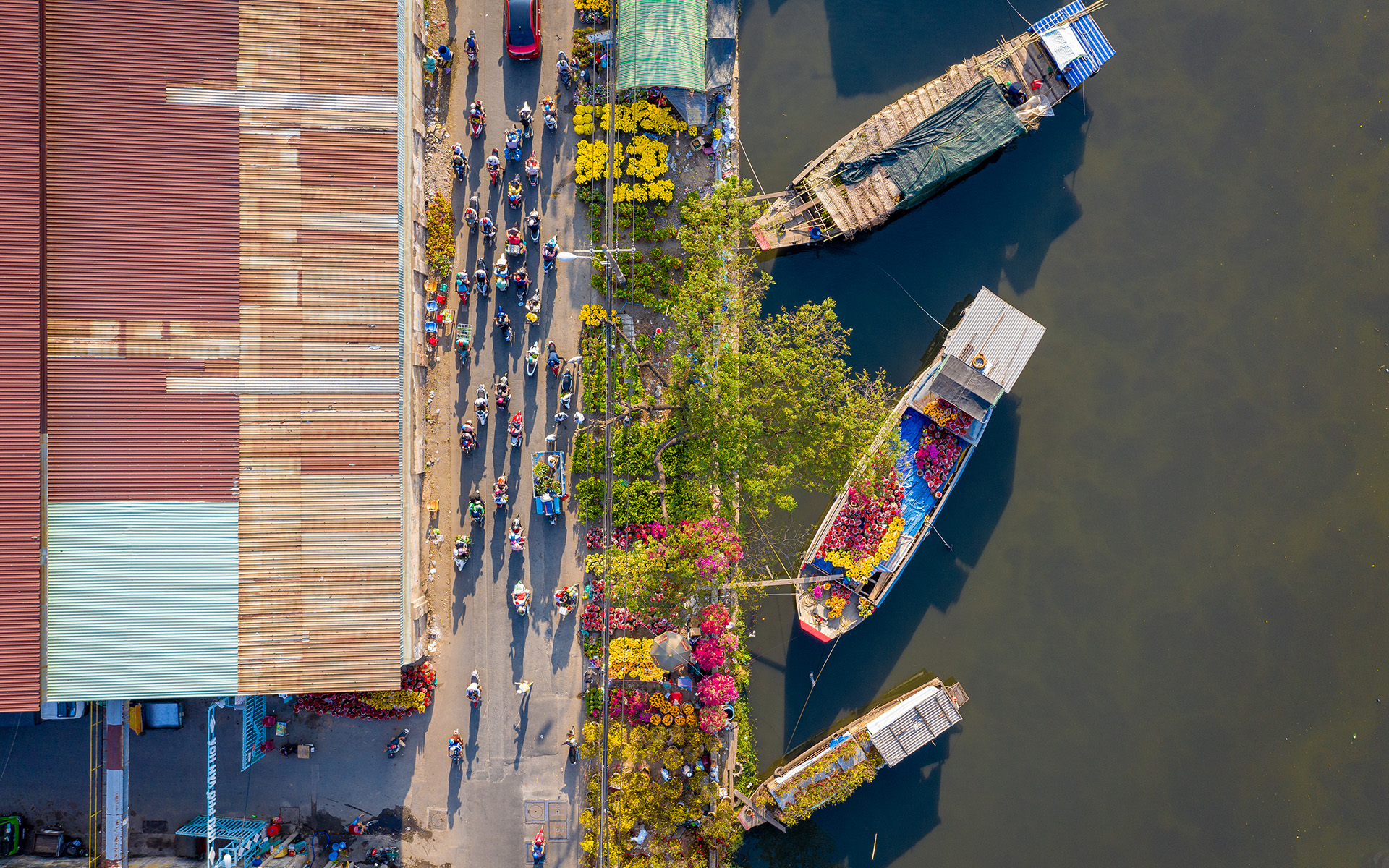Ho Chi Minh City has captured a significant and growing share of production leaving China, with many global brands sourcing from the city.
City Class Score
| Commercial Hubs | |
| Export Champions | |
| Mobility Connectors | |
| Climate Resilient |
Corporate HQs, MNC presence, branded outlets, hotels, manufacturing, start-up ecosystem,
transport linkages, population, and income.
Go to the class information
Manufacturing, industrial parks, export share and share change by category, air and port
infrastructure, freight time to market, trade agreements, and expert interviews.
Go to the class information
Passenger traffic, flight connectivity, air-cargo flights, port infrastructure, container
ship sailings, and major road networks.
Go to the class information
Coastal and river flooding, extreme rain, extreme heat and humidity, cyclones, and water
scarcity.
Go to the class information
From the heights of the dazzling Landmark 81 skyscraper, a visitor can glimpse
the future of the world’s supply chain. The 79th floor observation deck offers sweeping views of the
city’s historical heart and the serene Saigon River alongside the bustling industrial parks that are
driving the city’s growth. While foreign investors might spend their days navigating factories,
their evenings are often enjoyed savoring the delicious street food. No trip to this lively city
feels complete without visiting a busy alleyway to indulge in iconic dishes like pho and banh mi.
Ho Chi Minh City is a prime alternative to China’s sprawling industrial hubs, from Shenzhen
to Ningbo. During the past three years, Vietnam has captured a significant slice of the global
export pie, gaining between two and nine percentage points since 2018 — more than any other emerging
market — across various consumer products, from apparel to electronics, as companies rethink their
supply chains. The city is also reaping the benefits of a regional growth shift, as multinationals
pursue Ho Chi Minh City’s rapidly expanding domestic market as opportunities in its larger northern
neighbor have begun to wane.
In the past 15 years, a steady influx of foreign
multinationals has transformed the city. Brands like Unilever, Procter & Gamble, Samsung, Nike,
Adidas, and H&M have established operations or sourcing facilities here. Even Chinese
manufacturers are getting in on the action, with names like Apple supplier BOE Technology Group
making significant investments. Ho Chi Minh City’s strategic location near four other highly ranked
manufacturing cities, including Thu Dau Mot and Bien Hoa, further strengthens the region’s supply
chain. Global supply chain experts are able to source a wider variety of components locally,
reducing the need to import from China.
The city’s transport infrastructure adds to its
allure for global brands and manufacturers. With access to some of the region’s largest container
ports — three of which are listed among the world’s top 50 — Ho Chi Minh City offers direct shipping
routes to North America and Europe. While air cargo flights from Tan Son Nhat International Airport
currently lag behind those of regional competitors, the number of flights is on the rise. The
municipal government also is hard at work on a second, even larger international airport to the
east, set to open in 2026, promising to enhance connectivity even further.

